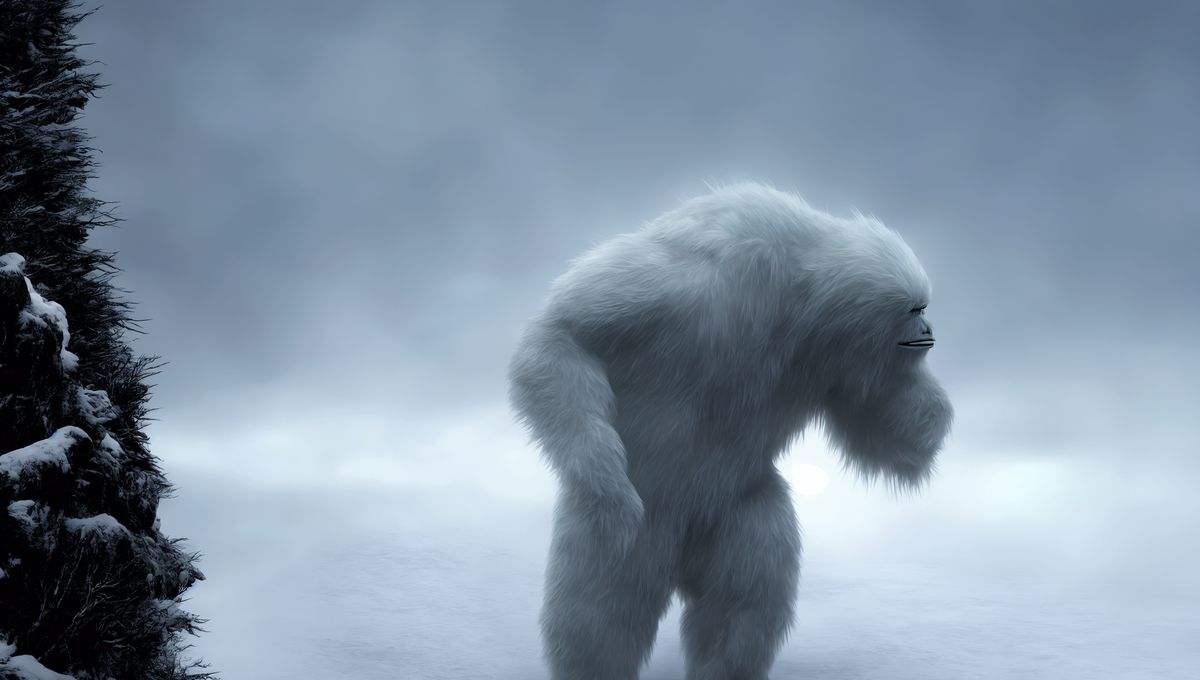
In 1954, the Daily Mail sponsored a team of journalists and mountaineers to search the Himalayas for the elusive and very real (so they believed) Abominable Snowman. The whole venture was a failure that cost the newspaper the equivalent of £1 million in today’s money, but it also demonstrates the excitement that surrounded this supposed cryptid at the time.
The Abominable Snowman, otherwise known as the Yeti, is a legendary humanoid-like creature that lurks in the remote Himalayan mountains. This mysterious cryptid has fascinated humans for centuries with both its rare “appearances” and the tantalizing signs it supposedly leaves behind. Despite the many stories that purport to its presence in the central Asian mountain tops, there is no solid evidence to support its existence – but when has that ever stopped people from trying to find it?
A quintessential Wildman
Stories about the Yeti were already circulating in Britain during the 19th century when diplomats spread stories about the wild men of Nepal who were able to move at great speeds across the snow. Versions of this creature were further popularized by newspapers and it soon found a home in the colorful tales of Conan Doyle, Rider Haggard, and Jules Verne. But it wasn’t until 1921 that Yeti really became a household name associated with a distant monster.
That year, the British Mount Everest Reconnaissance Expedition allegedly encountered traces of the strange beastie while trying to map a route up the world’s highest mountain. During their descent, they found large footprints in the snow which the exhibition leader, Charles Howard-Bury, believed were made by a wolf – but the local guides had other thoughts. According to the experienced Sherpa, the footprints belonged to the metoh-kangmi, which translates to “man-bear snow-man”.
However, when a young journalist called Henry Newman got hold of the story, his attempts to translate metoh gave him “filthy” rather than “man-bear”, so he decided to sensationalize his mistranslated creature a tweaked name – the Abominable Snowman. In doing so, Newman brought an old legend to a new audience.
The Yeti is actually an ancient creature that hails from Himalayan folklore. It is usually presented as a danger and a warning against wandering too far from the safety of the community. The legend is so old that even Alexander the Great was said to have wanted to see a Yeti when he conquered the Indus Valley in 326 BCE.
According to witnesses, the Yeti is a large muscular biped that is covered in thick grey or sometimes reddish-brown hair. Caught somewhere between a man and a bear or gorilla, the creature is often described as being around 1.8 meters (6 feet) tall, which is comparatively shorter than the American Bigfoot is meant to be. Nevertheless, the beastie occupies a similar space in the popular imagination.
In many ways, the Yeti, along with its North American counterpart, continues the ancient folkloric tradition of the Wild Man that features in many cultures across the world. The ubiquity of this particular type of being is interpreted as a sign of our uneasy relationship with nature and represents a kind of liminal embodiment of man and beast, civilization and the wild.
The search for the Yeti
After Henry Newman popularized the name of the Abominable Snowman, an act that the cryptozoologist Ivan Sanderson described as being like “an explosion of an atom bomb” in capturing imaginations, many serious and hobbyist explorers set out to find the mysterious creature. But while it inspired some to become intrepid hunters, others saw a chance for mischief. Tricksters and pranksters started capitalizing on the Yeti’s supposed existence and produced fake evidence that some found too compelling to ignore.
One such piece was created by a man called Eric Shipton, who took pictures of footprints in the snow that he claimed belonged to the Yeti. It was Shipton’s photos that inspired the 1954 Daily Mail exhibition.
The team, consisting of journalists, ornithologists, zoologists, and 370 porters – armed with tranquilizer guns and a cage – set off on a journey that took them 15 weeks to complete. On February 17, 1954, the Advertiser reported that the exhibition was well on its way and that one of the party members, Charles Stoner, was already there and had “come across tracks of the Abominable Snowman”.
The accompanying account from Ralph Izzard is filled with intriguing descriptions that evoke the excitement of the hunt, but despite this apparent early progress, the Yeti remained at large. Moreover, some aspects of the search were simply farcical.
To give a sense of perspective of just how farcical some of this was, one of the journalists reportedly turned up at the Himalayan base camp in a silk cravat, a golfing jacket, and pair of plimsolls.
In the end, the team faced defeat and returned empty-caged. But while the team did not find the Abominable Snowman, the mission was not a complete failure. One of the Zoologists, Dr Biswamoy Biswas, according to a 1955 issue of the Bulletin of The British Ornithologists’ Club, identified two species of Himalayan bird that were “not known to science” at the time.
Since the 1954 expedition, many other efforts have been made to find the elusive Yeti, but unfortunately, there is still no solid evidence that the cryptid exists. In fact, in 2017, researchers re-examined dozens of specimens – hair, bone, teeth, and skin – that have been collected by various sources claiming to be from Yetis. However, the DNA analysis revealed them all to be from canines or bears.
Ultimately, it seems the legendary Yeti may well remain just that, a legend.
Source Link: The £1 Million Hunt For The Abominable Snowman